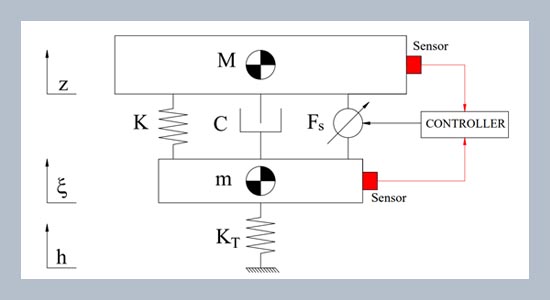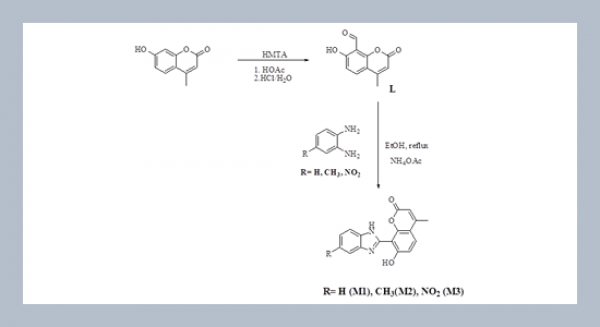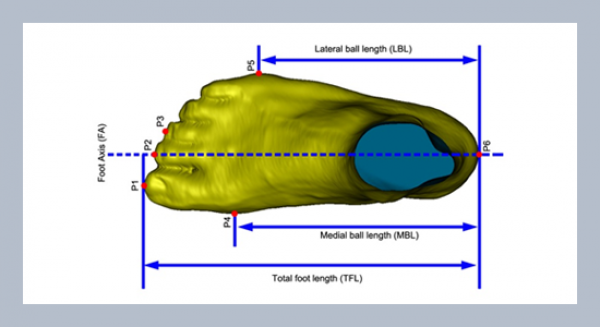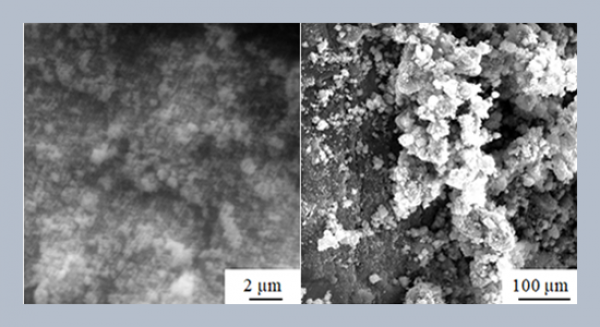REFERENCES
- Anh, N.T. 2020. Control ac active suspension system by using PID and LQR controller. International Journal of Mechanical and Production Engineering Research and Development, 10, 7003–7012.
- Avesh, M., Srivastava, R. 2012. Modeling simulation and control of active suspension system in matlab Simulink environment. Proceedings of the Students Conference on Engineering and Systems, Pradesh, 1–6.
- Bai, R., Guo, D. 2018. Sliding mode control of the active suspension system with the dynamics of a hydraulic actuator. Complexity, 5907208.
- Bello, M.M., Shafie, A.A., Khan, R. 2015. Active vehicle suspension using full state feedback controller. Advanced Materials Research, 1115, 440–445.
- Deshpande, V.S., Bhaskara, M., Phadke, S.B. 2012. Sliding mode control of active suspension system using a disturbance observer. Proceedings of the 12th International Workshop on Variable Structure Systems, Maharashtra, 70–75.
- Elmadany, M.M. 2012. Control and evaluation of slow active suspensions with preview for a full car. Mathematical Problems in Engineering, 375080.
- Fu, Z.-J., Li, B., Ning, X.-B., Xie, W.-D. 2017. Online adaptive optimal control of vehicle active suspension system using single network approximate dynamic programming. Mathematical Problems in Engineering, 4575926.
- Kaleemullah, M., Faris, W., Ghazaly, N.M. 2019. Analysis of active suspension control policies for vehicle using robust controllers. International Journal of Advanced Science and Technology, 28, 836–855.
- Konieczny, L., Burdzik, R. 2017. Modern suspension systems for automotive vehicles and their test methods. Journal of Vibroengineering, 14, 233–237.
- Lee, J., Oh, K., Yi, K. 2020. A novel approach to design and control of an active suspension using linear pump control based hydraulic system. Journal of Automobile Engineering, 234, 1224–1248.
- Li, W., Du, H., Ning, D., Li, W. 2019. Robust adaptive sliding mode PI control for active vehicle seat suspension systems. Proceedings of the Chinese Control and Decision Conference (CCDC), China, 5403–5408.
- Lin, B., Su, X., Li, X. 2019. Fuzzy sliding mode control for active suspension system with proportional differential sliding mode observer. Asian Journal of Control, 21,1–13.
- Lin, J., Lian, R.-J., Huang, C.-N., Sie, W.-T. 2009. Enhanced fuzzy sliding mode controller for active suspension systems. Mechatronics, 19, 1178–1190.
- Liu, Y.-J., Zeng, Q., Tong, S., Chen, C.L.P., Liu, L. 2019. Adaptive neural network control for Active Suspension Systems with Time Varying Vertical displacement and speed constraints. Transaction on Industrial Electronics, 66, 9458–9466.
- Marcu, S., Popa, D., Stănescu, N.D., Pandrea, N. 2017. Model for the study of active suspension. IOP Conference Series: Materials Science and Engineering, 012032.
- Maurya, V.K., Bhangal, N.S. 2018. Optimal control of vehicle active suspension system. Journal of Automation and Control Engineering, 6, 22–26.
- Na, J., Huang, Y., Pei, Q., Wu, X., Gao, G., Li, G. 2020. Active suspension control of full-car systems without function approximation. Transactions on Mechatronics, 25, 779–791.
- Na, J., Huang, Y., Wu, X., Su, S.F., Li, G. 2020. Adaptive finite-time fuzzy control of nonlinear active suspension systems with input delay. IEEE Transaction on Cybernetics, 50, 2639–2650.
- Nagarkar, M.P., Vikhe, G.J., Borole, K.R., Nandedkar, V.M. 2011. Active control of quarter car suspension system using linear quadratic regulator. International Journal of Automotive and Mechanical Engineering, 3, 364–372.
- Palanisamy, S., Karuppan, S. 2016. Fuzzy control of active suspension system. Journal of Vibroengineering, 18, 3197–3204.
- Pang, H., Chen, Y., Chen, J.N., Liu, X. 2017. Design of LQG controller for active suspension without considering road input signals. Shock and Vibration, 6573567.
- Riduan, A.F.M., Tamaldin, N., Sudrajat, A., Ahmad, F. 2018. Review on active suspension system. SHS Web Conference, 49, 02008.
- Rizvi, S.M.H., Abid, M., Khan, A.Q., Satti, S.G., Latif, J. 2018. H¥ control of 8 degrees of freedom vehicle active suspension system. Journal of King Saud University-Engineering Science, 30, 161–169.
- Sam, Y.M., Hudha, K., Osman, J.H.S. 2007. Proportional-integral sliding mode control of a hydraulically actuated active suspension system: Force tracking and disturbance rejection control on non-linear quater car model. International Journal of Vehicle Systems Modelling and Testing, 2, 391–410.
- Shafie, A.A., Bello, M.M., Khan, R.M. 2015. Active vehicle suspension control using electro-hydraulic actuator on rough road terrain. Journal of Advanced Research in Applied Mechanics, 9, 15–30.
- Soh, M., Jang, H., Park, J., Sohn, Y., Park, K. 2018. Development of preview active suspension control system and performance limit analysis by trajectory optimization. International Journal of Automotive Technology, 19, 1001–1012.
- Soleymani, M., Montazeri-Gh, M., Amiryan, R. 2012. Adaptive fuzzy controller for vehicle active suspension system based on traffic conditions. Scientia Iranica, 19, 443–453.
- Sun, Y., Zhao, L., Xiang, W. 2013. A fuzzy logic controller for vehicle active suspension systems. Advanced Materials Research, 805, 1645–1649.
- Tamburrano, P., Plummer, A.R., Distaso, E. 2019. A review of electro-hydraulic servo valve research and development. International Journal of Fluid Power, 20, 53–98.
- Turkkan, M., Yagiz, N. 2013. Fuzzy logic control for active bus suspension system. IOP Conference Series: International Conference on Mathematical Modelling in Physical Sciences, 410, 012006.
- Wei, S., Su, X. 2020. Sliding mode control design for active suspension systems using quantum particle swarm optimization. International Journal of Vehicle Design, 81, 93–114.
- Williams, D.E., Haddad, W.M. 1997. Active suspension control to improve vehicle ride and handling. Vehicle System Dynamics, 28, 1–14.
- Xiao, H., Chen, W., Zhou, H., Zu, J.W. 2009. Integrated vehicle dynamics control through coordinating electronic stability program and active suspension system. Proceedings of the International Conference on Mechatronics and Automation, Changchun, 1150–1155.
- Xue, X.D., Cheng, K.W.E., Zhang, Z., Lin, J.K. 2011. Study of art of automotive active suspensions. 4th International Conference on Power Electronics Systems and Applications, Hong Kong, 1–7.
- Youness, S.F., Lobusov, E.C. 2019. Networked control for active suspension system. Procedia Computer Science, 150, 123–130.















